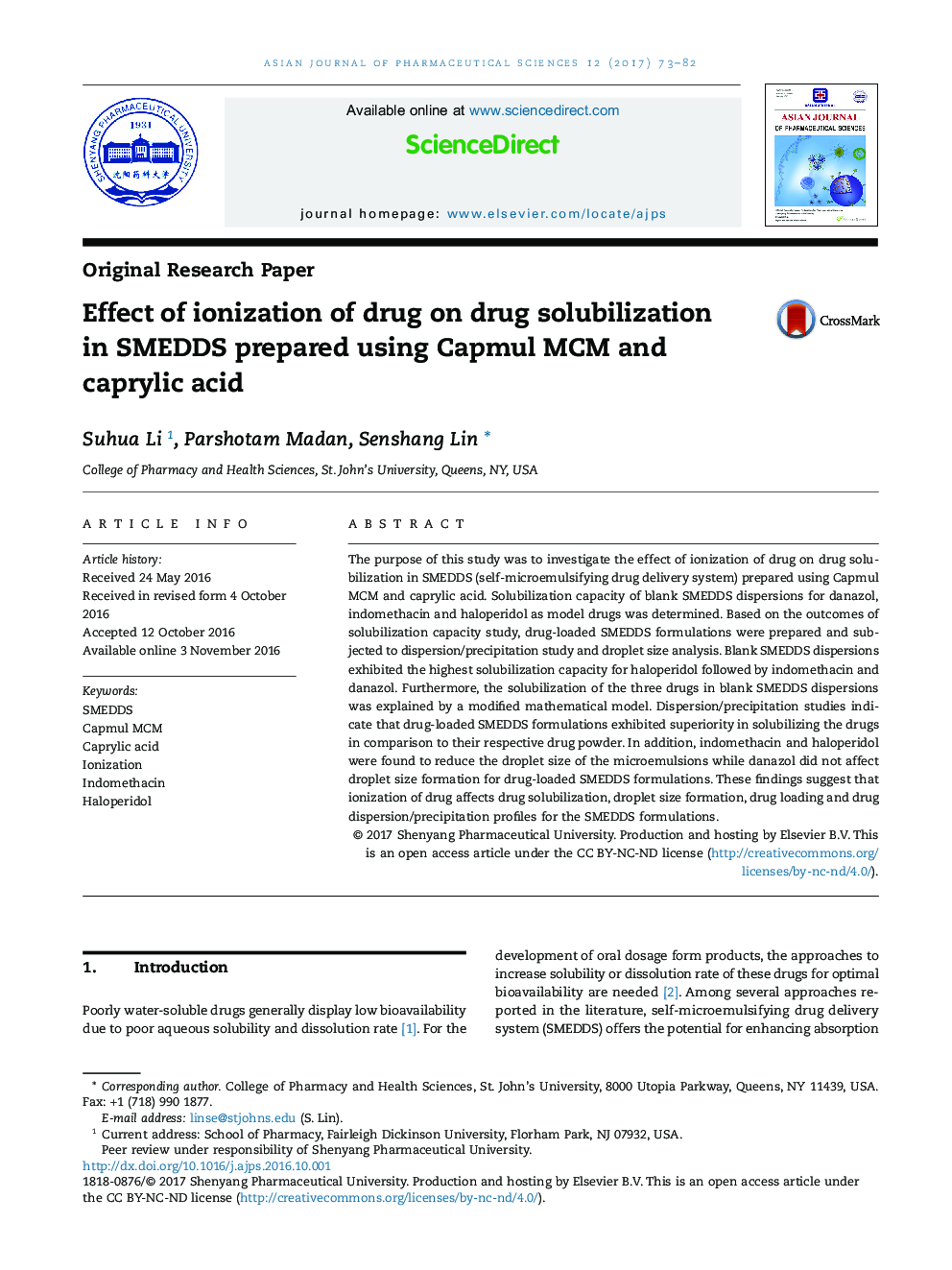| Article ID | Journal | Published Year | Pages | File Type |
|---|---|---|---|---|
| 5549540 | Asian Journal of Pharmaceutical Sciences | 2017 | 10 Pages |
The purpose of this study was to investigate the effect of ionization of drug on drug solubilization in SMEDDS (self-microemulsifying drug delivery system) prepared using Capmul MCM and caprylic acid. Solubilization capacity of blank SMEDDS dispersions for danazol, indomethacin and haloperidol as model drugs was determined. Based on the outcomes of solubilization capacity study, drug-loaded SMEDDS formulations were prepared and subjected to dispersion/precipitation study and droplet size analysis. Blank SMEDDS dispersions exhibited the highest solubilization capacity for haloperidol followed by indomethacin and danazol. Furthermore, the solubilization of the three drugs in blank SMEDDS dispersions was explained by a modified mathematical model. Dispersion/precipitation studies indicate that drug-loaded SMEDDS formulations exhibited superiority in solubilizing the drugs in comparison to their respective drug powder. In addition, indomethacin and haloperidol were found to reduce the droplet size of the microemulsions while danazol did not affect droplet size formation for drug-loaded SMEDDS formulations. These findings suggest that ionization of drug affects drug solubilization, droplet size formation, drug loading and drug dispersion/precipitation profiles for the SMEDDS formulations.
Graphical AbstractUpon dispersion of drug-loaded SMEDDS in aqueous media at various pHs, four drug-related species - Du, Di, Du-SMEDDS and Di-SMEDDS - contribute to total drug solubilization in the formed microemulsions. Distinct solubilization behavior was observed for neutral, weak acidic and weak basic drugs due to various extent of drug ionization.Download high-res image (89KB)Download full-size image
